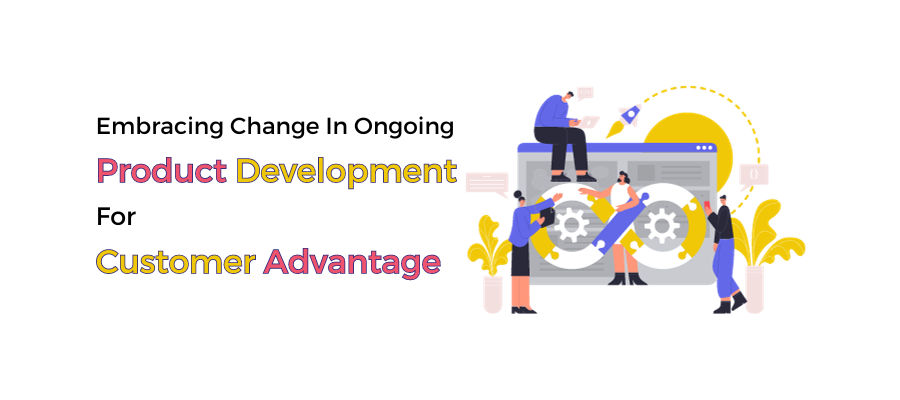Agile Principles Series (Part 2): Embracing Change In Ongoing Product Development For Customer Advantage

Have you completed exploring the first principle of the Agile Manifesto? In the second installment of our Agile Principles Series, we unravel the essence of the Agile Manifesto's second principle:
"Welcome changing requirements, even late in development. Agile processes harness change for the customer's competitive advantage."
This particular principle represents a different approach to requirements. While most traditional approaches do not accept multiple changes during the initial development, the second principle highlights the need to accept such changes!
Today's organizations, adapting an Agile Transformation, must accept changes in requirements to deliver smaller yet usable increments in product development. But why is this a must? Let's explore the strategic advantage it offers!
The Agile Mindset: Adapting to Change
The second principle of the Agile Manifesto emphasizes the importance of welcoming changing requirements later in the development process. It might seem counterintuitive to traditional project management, where rigid plans approach to deliver the Product vision.
However, Agile processes recognize that customer needs evolve. Hence, product development must evolve with the changing requirements. So, it doesn’t focus on reducing the change variations to the original requirements. Instead, it welcomes change that delivers customer value in smaller increments. All Agile Developers learn the customer demands after each Iteration and implement the future requirements as Product Enhancements!
Why Do Agile Teams Welcome Change?
Change is not feared but embraced in Agile. All Agile teams actively welcome change for several compelling reasons:
- Adaptability Spurs Innovation: Change fuels a culture of innovation and creative problem-solving.
- Customer-Centricity: Agile teams prioritize responding to evolving customer needs.
- Enhanced Quality: Embracing change allows for continuous improvement and refined product quality.
- Market Responsiveness: Teams stay Agile to respond to market shifts and demands.
- Continuous Learning: Welcoming change fosters a mindset of constant learning and improvement.
- Competitive Advantage: Adaptable teams gain a strategic edge in the dynamic business landscape.
- Maximizing Value Delivery: Change acceptance delivers the most valuable features.
Embracing change is not merely a practice but a philosophy that propels Agile teams toward unparalleled success.
The Best Agile Methodology To Accept Change: Strategic Adaptability with Scrum
The Scrum framework is perfect for Agile development that accepts requirements changes at every stage of SDLC. This powerful framework manages complex product development workflows to get changes in each Iteration.
In changing requirements, the Scrum framework provides a structured yet flexible approach. The Product Owner manages the Product Backlog, a dynamic list of features and enhancements. It allows teams to reprioritize and adapt to evolving customer needs. The Scrum Team engages in Sprint Planning to decide which Product Backlog Items (PBIs) to tackle in the current Sprint.
A Scrum Master coordinates with a Product Owner and Developers to collaborate seamlessly within the Scrum Team. All of them together ensure the successful implementation of Agile Practices. A Product Owner ensures that changing requirements meet the expectations of stakeholders and end users. They constantly refine the Product Backlog based on customer feedback and market dynamics.
The outcome is that all Agile teams work collaboratively on the most valuable features and maximize the product's impact.
Tips for Embracing Change Successfully:
If you want to outshine your organization as an Agile Leader, creating a working environment that welcomes change is essential. As an Agile Practitioner, you must understand the importance of constant learning and adaptation. Follow the tips below to embrace the shift!
- Continuous Refinement: Regularly revisit and refine the Product Backlog to reflect changing priorities and customer feedback.
- Collaborative Decision-Making: Involve the entire Scrum Team, including the Product Owner and Developers, in decision-making processes to ensure diverse perspectives.
- Transparent Communication: Maintain open and transparent communication channels to address changes and inform all team members promptly.
- Agile Training and Workshops: Invest in Agile training and workshops to empower your team with the knowledge and skills for navigating change.
- Sprint Backlog: The Product Backlog items are broken down into smaller tasks in the sprint backlog, facilitating a more granular approach to development.
- Incremental Delivery: Embrace the Agile principle of delivering a potentially shippable Increment at the end of every Sprint, allowing for quick adaptation based on customer feedback.
- Acceptance Criteria: Clearly define the acceptance criteria for a product backlog item for the developers and ensure a shared understanding within the team.
The ability to embrace change is not just a survival skill; it's a strategic advantage. Agile teams can pivot quickly by welcoming changing requirements even late in development, staying ahead of the competition. This flexibility allows for incorporating new insights and market trends while ensuring the team reaches the Product Goal per the customer's vision.
Summing Up:
The second principle of the Agile Manifesto urges leaders and managers to view change not as a disruption but as an opportunity in the journey of Agile transformation. Embrace change, harness it for the customer's competitive advantage, and let your Agile journey unfold with strategic adaptability at its core.
As we continue the Agile Principles Series, stay tuned for insights into the third principle: "Deliver working software frequently, with a preference for the shorter timescale." Until then, lead your team with an Agile mindset, ready to welcome and leverage change for unparalleled success.
Reference:
https://www.scrum.org/resources/blog/how-12-principles-agile-manifesto-work-real-life



